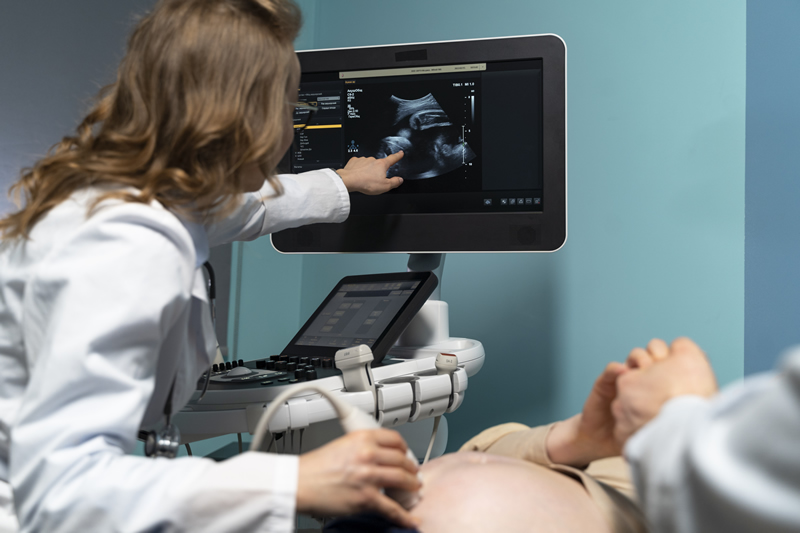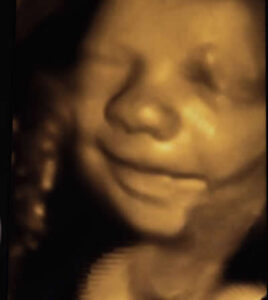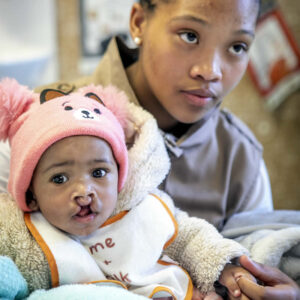Finding out that your baby has a cleft lip or palate before he or she is born is a huge advantage. Apart from preparing you for the baby’s appearance, having advance warning allows you to research the condition, find out about treatment and prepare in practical ways.
Modern ultrasound scans are a routine part of prenatal care. Because they are non-invasive, painless and safe for both mother and unborn baby, they are ideal for monitoring foetal development and weight. They are also useful in helping to identify conditions such as a cleft lip or palate.
How soon can you tell if your baby has a cleft condition?
Cleft conditions happen very early in pregnancy. Your baby’s lips and palate form between the 6th and 9th week. So, by the time you have your first scan at around 12 weeks, the condition will already be present. However, owing to the size and immaturity of the foetal structures, the doctor may not be able to pick up a cleft at this stage.
The main purpose of this early scan is to confirm the pregnancy and check for a foetal heartbeat to reassure expectant parents. Not all pregnant women have this scan – especially in areas where access to ultrasound equipment is limited.
However, most women will have an ultrasound scan in the second trimester, at around 20-22 weeks. This is an important aspect of prenatal care. It enables your doctor to check that the baby is developing normally, measure his or her weight, identify gender and predict the due date. Another scan may be done at 32-40 weeks to check the amniotic fluid and placental position prior to birth.
In addition, you may opt for an additional 3D/4D scan at 26-32 weeks. This gives a much clearer image of what the baby actually looks like.

Different types of ultrasound used in pregnancy
All ultrasounds use sound waves to create an image of your baby in the womb. The familiar grainy black and white image or video is a normal 2-D ultrasound. This affords a cross-section view of the foetus, enabling the sonographer to check important markers and measurements for anomalies.
 As the name suggests, a 3-D scan uses a number of surface images to form a three-dimensional colour image, which looks more like a typical photograph. 4-D adds movement, so you can see your baby kicking, sucking their thumb, or opening and closing their eyes.
As the name suggests, a 3-D scan uses a number of surface images to form a three-dimensional colour image, which looks more like a typical photograph. 4-D adds movement, so you can see your baby kicking, sucking their thumb, or opening and closing their eyes.
For expectant parents, a 3-D scan is exciting as they can actually see their unborn child. However, the 2-D scan is more valuable as a diagnostic tool.
Will a scan pick up a cleft condition?
Although it’s more common for babies to have both a cleft lip and a cleft palate, the two conditions don’t always go together. Because the lip and palate develop separately, it’s possible to have a cleft lip without a cleft palate and vice versa.
Ultrasound scans commonly pick up the presence of a cleft lip – but it can be almost impossible to detect a cleft palate, especially if the baby does not have a cleft lip.
According to Durban based diagnostic ultrasonographer, Julie Rawlins, “The standard 2-D ultrasound scan cannot always reliably identify a cleft palate at 20-22 weeks, and sometimes not even in the third trimester scans. Most scans only ever pick up a cleft lip, and sometimes the suspicion of a cleft palate.
“An isolated submucous cleft palate (a cleft in the muscle section of the palate but covered by the lining at the top of the mouth) or smaller, minor hard palate clefts are often impossible to pick up, as the baby’s tongue can obscure the palate. Even after the baby is born, doctors may miss a cleft palate.”
When ultrasound scans fail
 Despite the best prenatal care, some babies are still born with undiagnosed cleft lip or palate. Although this can come as quite a shock to new parents, help is available almost immediately.
Despite the best prenatal care, some babies are still born with undiagnosed cleft lip or palate. Although this can come as quite a shock to new parents, help is available almost immediately.
Surgery to repair a cleft lip is usually done within the first three months of a child’s life. Repairing a cleft palate is more complicated and is usually done when the child is older – between 6 to 12 months of age.
Depending on the severity of the cleft, your child will likely need more surgery, special dental care and speech therapy as they get older.
In some cases, a cleft palate is not picked up even after birth. Mother and child may be discharged from the hospital and the condition diagnosed subsequently because the baby has difficulty feeding or fails to gain weight.
What to do if your baby is born with a cleft condition
One of the most immediate concerns after birth is feeding. While most babies with cleft lip can breast-feed, a cleft palate may make sucking difficult, leading to poor weight gain.
Milk trickling from the baby’s nose during or after feeding may be the first sign of a cleft palate. You may need to use a special feeding bottle, or even feed the baby from a cup or spoon. In some cases, your specialist may suggest an obturator, a special feeding plate, which seals the roof of the mouth, allowing the baby to suck naturally.

Operation Smile South Africa is here to help
Sadly, it can take months – or even years – for some children born with cleft conditions to get the help they need. Time and again, parents are turned away from local hospitals because there are no specialist cleft surgeons, equipment or facilities for this type of operation.
For parents living in under-resourced areas, without the means to pay for private health care, Operation Smile provides access to world-class surgery and ongoing cleft care free of charge.
We are also committed to transferring skills and knowledge to local doctors, increasing capacity for hospitals across the country to offer this surgery.
Your donations help make this work possible. Please consider helping a child who might otherwise not get the surgery they need to live a normal life. There are so many ways you can get involved and make a difference.
